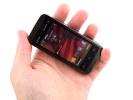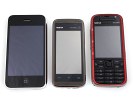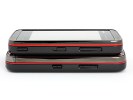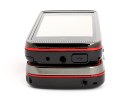The first Nokia century began with Fredrik Idestam's paper mill on the banks of the Nokianvirta river. Between 1865 and 1967, the company would become a major industrial force; but it took a merger with a cable company and a rubber firm to set the new Nokia Corporation on the path to electronics...

1865: The birth of Nokia
Fredrik Idestam establishes a paper mill at the Tammerkoski Rapids in south-western Finland, where the Nokia story begins.

1898: Finnish Rubber Works founded
Eduard Polón founds Finnish Rubber Works, which will later become Nokia's rubber business.

1912: Finnish Cable Works founded
Arvid Wickström starts Finnish Cable Works, the foundation of Nokia's cable and electronics businesses.

1937: Verner Weckman, industry heavyweight
Former Olympic wrestler Verner Weckman becomes President of Finnish Cable Works.

1960: First electronics department
Cable Works establishes its first electronics department, selling and operating computers.

1962: First in-house electrical device
The Cable Works electronics department produces its first in-house electrical device - a pulse analyzer for nuclear power plants.

1967: The merger
Nokia Ab, Finnish Rubber Works and Finnish Cable works formally merge to create Nokia Corporation.
The newly formed Nokia Corporation was ideally positioned for a pioneering role in the early evolution of mobile communications. As European telecommunications markets were deregulated and mobile networks became global, Nokia led the way with some iconic products...

1979: Mobira Oy, early phone maker
Radio telephone company Mobira Oy begins life as a joint venture between Nokia and leading Finnish television maker Salora.

1981: The mobile era begins
Nordic Mobile Telephone (NMT), the first international mobile phone network, is built.

1982: Nokia makes its first digital telephone switch
The Nokia DX200, the company’s first digital telephone switch, goes into operation.

1984: Mobira Talkman launched
Nokia launches the Mobira Talkman portable phone.

1987: Mobira Cityman – birth of a classic
Nokia launches the Mobira Cityman, the first handheld NMT phone.

1991: GSM – a new mobile standard opens up
Nokia equipment is used to make the world’s first GSM call.
In 1992, Nokia decided to focus on its telecommunications business. This was probably the most important strategic decision in its history.
As adoption of the GSM standard grew, new CEO Jorma Ollila put Nokia at the head of the mobile telephone industry’s global boom – and made it the world leader before the end of the decade...
 1992: Jorma Ollila becomes President and CEO
1992: Jorma Ollila becomes President and CEOJorma Ollila becomes President and CEO of Nokia, focusing the company on telecommunications.
 1992: Nokia’s first GSM handset
1992: Nokia’s first GSM handsetNokia launches its first GSM handset, the Nokia 1011.
 1994: World’s first satellite call
1994: World’s first satellite callThe world’s first satellite call is made, using a Nokia GSM handset.
 1997: Snake – a classic mobile game
1997: Snake – a classic mobile gameThe Nokia 6110 is the first phone to feature Nokia’s Snake game.
Nokia’s story continues with 3G, mobile multiplayer gaming, multimedia devices and a look to the future...
 2003: Nokia launches the N-Gage
2003: Nokia launches the N-GageMobile gaming goes multiplayer with the N-Gage.
 2005: The Nokia Nseries is born
2005: The Nokia Nseries is bornNokia introduces the next generation of multimedia devices, the Nokia Nseries.
 2005: The billionth Nokia phone is sold
2005: The billionth Nokia phone is soldNokia sells its billionth phone – a Nokia 1100 – in Nigeria. Global mobile phone subscriptions pass 2 billion.
 2006: A new President and CEO – Nokia today
2006: A new President and CEO – Nokia todayOlli-Pekka Kallasvuo becomes Nokia’s President and CEO; Jorma Ollila becomes Chairman of Nokia’s board. Nokia and Siemens announce plans for Nokia Siemens Networks.
 2007
2007Nokia recognized as 5th most valued brand in the world. Nokia Siemens Networks commences operations. Nokia launches Ovi, its new internet services brand.
 2008
2008Nokia's three mobile device business groups and the supporting horizontal groups are replaced by an integrated business segment, Devices & Services.













